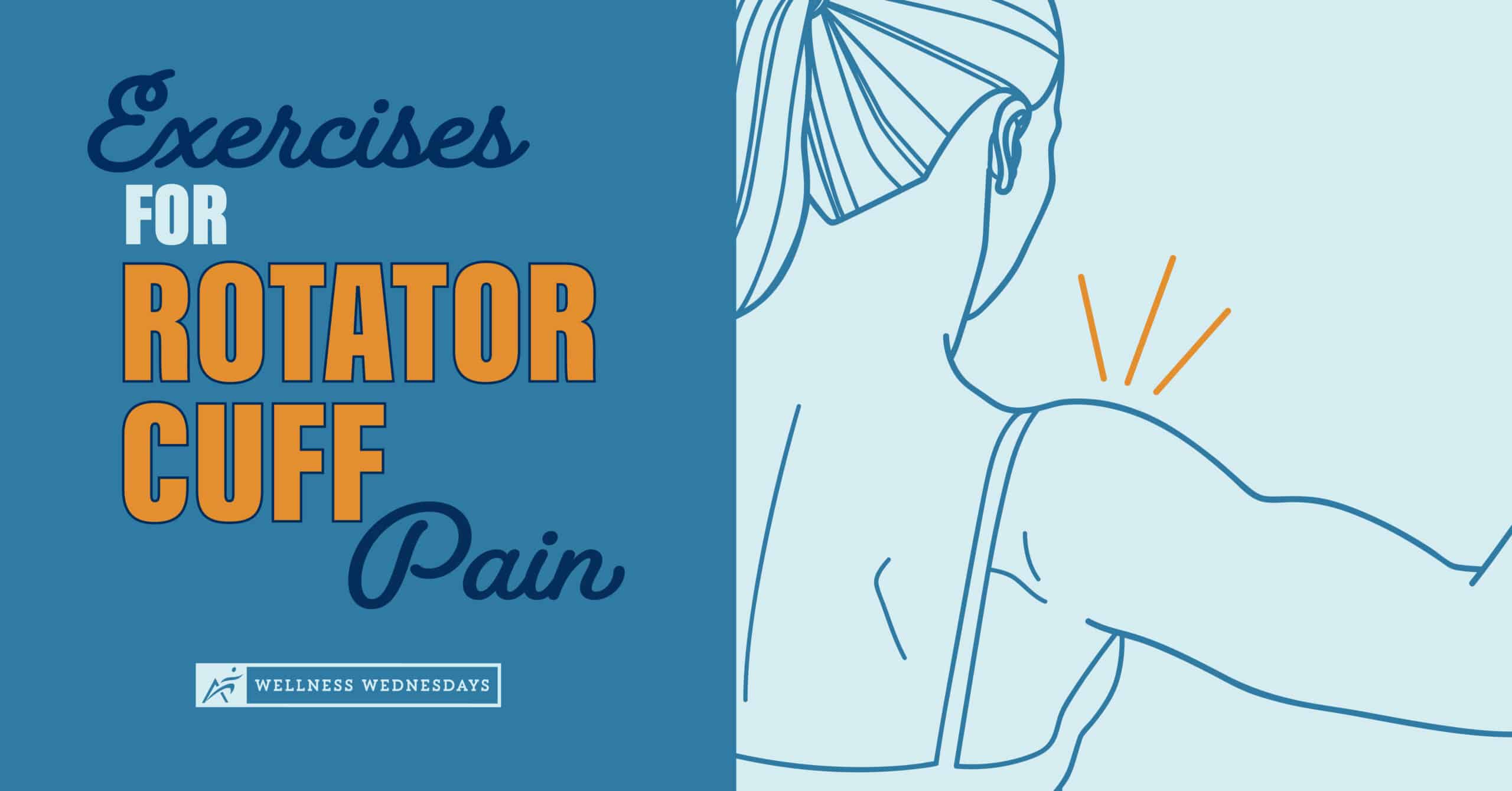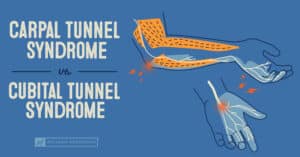The rotator cuff is a group of muscles and tendons that surround and stabilize the shoulder joint. Because your rotator cuff muscles are used often in everyday life, they can easily suffer painful injuries. Discover the common causes of rotator cuff pain and explore three exercises that can help prevent rotator cuff pain!
3 Exercises to Help Prevent Rotator Cuff Pain
*Disclaimer: Always consult with your doctor before starting any exercise program. If you experience any numbness, tingling, or reproduction of your symptoms, please contact your doctor.
Pec Release with Lacrosse Ball
- For this exercise, you will need a lacrosse ball.
- Take the lacrosse ball and place it right below the collarbone.
- Then, stand up into the wall placing your body weight into the lacrosse ball.
- Search for areas that might be tender. Once you find an area, you are going to hold until that discomfort lessens, and then you can either move the lacrosse ball with your other hand or you can shift your weight into the lacrosse ball.
- You can also then move your arm up and down to work through that area.
- Perform this for 1 minute daily.
Shoulder Internal & External Rotation Walkout
- For these exercises, you will need an elastic band and a stable surface.
- Tie off the elastic band onto a stable surface high enough so that your arm can be parallel to the ground.
- Bring your arm parallel to the ground, making sure your elbow is bent to 90 degrees and your thumb is pointing straight up to the ceiling. You want to make sure you lock out your wrist in this position and you should not have any movement through the shoulder joint with this exercise.
- Step away from where you have the band tied off and hold this position.
- Keep your core tight so you are not overarching in the lower back with this exercise.
- If you need more resistance, you can take another step away from where you have the band tied off, or if you need less, you do not have to step out as far.
- Step back toward where the band is tied off and relax.
- To perform the external rotation, repeat the steps using the outside arm.
- For both versions, perform for 2 – 3 sets of 15 – 30 sec holds daily.
Anterior Pathway Stretch
- For this exercise, you will need a wall. You are going to be stretching the muscles on the front side of the forearm, the upper arm, and the chest.
- Place your hand onto the wall, making sure your elbow remains straight, and then turn away from the wall.
- You will feel this through the forearm, upper arm, and into that chest area.
- Hold for the specified time and then come out of the stretch by folding back into the wall.
- If you are feeling any numbness and or tingling in the hand, you can bring that hand down a little lower on the wall.
- Make sure you keep the elbow straight and then turn away to increase the stretch.
- If you still feel discomfort, then you can lessen the degree which you turn away from the wall.
- Complete this for 2 – 3 sets of 30 – 60 sec holds every day.
What Causes Rotator Cuff Pain?
Tendonitis/Tendinitis
Shoulder tendonitis is one of the most common causes of rotator cuff pain. Tendonitis happens when the tendons, the tissues that connect muscles to bones, become inflamed. This is caused by repetitive movements and is common among many athletes. Because of this, the condition is often referred to as Tennis Shoulder, Pitcher’s Shoulder, or Swimmer’s Shoulder. Below are some common symptoms you may experience if you have tendonitis.
- Dull, aching pain and stiffness from the front of the shoulder to the upper arm
- Shoulder and arm pain when stretching or reaching
- Shoulder clicking is accompanied by pain when raising the arm
- Loss of strength and mobility in the arm
Bursitis
Although tendonitis and bursitis are similar injuries caused by overuse, the tissues involved in each condition are different. While tendonitis involves inflamed tendons, shoulder bursitis results from an inflamed bursa. A bursa is a small fluid-filled sac in the shoulder that helps reduce friction. The most noticeable symptoms of shoulder bursitis are below.
- Pain localized around the middle of the shoulder
- Pain when the shoulder is touched, raised, or palpated
- Reduced range of motion in the affected shoulder
- Swelling, tenderness, and redness around the shoulder
- Shoulder pain that may get worse at night
Frozen Shoulder
Frozen shoulder is a condition that causes pain and restricts shoulder movement. You’re more likely to develop frozen shoulder if your shoulder has been immobilized for a long period of time, usually when recovering from another injury. Unfortunately, this condition can last from several months to years. Unlike most other rotator cuff conditions, symptoms of frozen shoulder begin gradually and develop in three stages.
3 Stages Of Frozen Shoulder
- Freezing: Pain starts to occur around the shoulder joint. The pain increases gradually over time and may get worse at night. The affected shoulder’s range of motion is gradually reduced while stiffness in the shoulder increases. This stage can last from 6 to 9 months.
- Frozen: During the “frozen” stage, the shoulder will remain stiff. Pain may be reduced, but shoulder movement is most restricted at this stage. This stage is the shortest and may last 4 to 6 months.
- Thawing: Range of motion slowly improves, and the pain gradually fades away. The “thawing” stage can last 6 months to 2 years.
Fast Shoulder Pain Relief With Airrosti
Rotator cuff injuries can be difficult to tackle. Restricted overhead movements can leave you feeling frustrated, especially when it interferes with your daily activities.
If you are suffering from a rotator cuff injury or pain, schedule an appointment with Airrosti. Airrosti Providers are dedicated to finding the root cause of your pain and treating injuries at the source. In most cases, complete injury resolution can happen in an average of 3 visits (based on patient-reported outcomes).
Airrosti offers both in-clinic and virtual appointments to suit your needs. For more information, call us at (800) 404-6050.
Read our medical disclaimer here.










